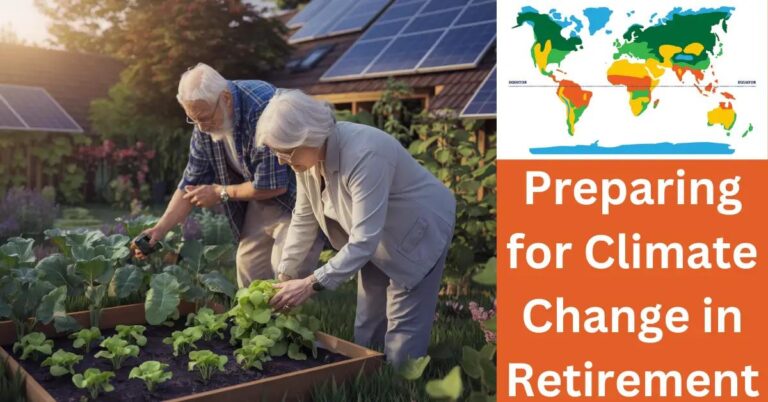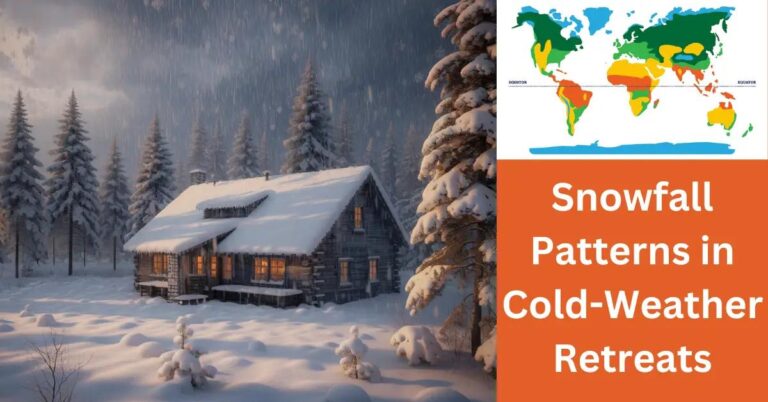TL;DR:
- Effective weather adaptation requires understanding vulnerable areas, building strong infrastructures like flood barriers, and community-based efforts for preparedness and resource sharing.
- Strengthening emergency plans, real-time weather monitoring, and utilizing sustainable practices like energy-efficient housing, solar panels, and drought-resistant crops are crucial.
- Resilient infrastructure involves durable materials, green projects, and smart urban planning to withstand extreme weather.
- Economic impacts include cost-effectiveness of renewable energy, insurance dynamics, climate-smart agriculture, and adaptation project investments.
- Communities can boost resilience through community gardens, public awareness, tailored adaptation strategies, and climate action initiatives.
- Technology aids adaptation via accurate forecasts, smart city solutions, renewable energy, and evaluation tools. These measures foster sustainable and resilient living environments.
Extreme weather is like a surprise party that no one wants. Moving to new countries can make these unfamiliar climates even more challenging. How do you cope with intense heat, freezing cold, or relentless storms? As global nomads, we must adapt quickly. Let me guide you through strategies to beat extreme weather and live comfortably in any condition. With the right tips, you'll turn weather woes into seamless living experiences.
What are effective strategies for adapting to extreme weather conditions?
How can we adapt to extreme weather? The key lies in understanding and preparation. First, we must know which areas and people might be at risk. Identifying vulnerable regions ensures we can focus our efforts where they are needed most. These could be coastal areas prone to flooding or cities facing heatwaves.
Next, we should build strong structures to withstand harsh conditions. Adaptive infrastructure, like flood barriers or elevated buildings, helps protect people and property. Developing these structures reduces the damage from extreme weather events.
How does community effort help? It brings people together to tackle challenges. Community-based adaptation encourages everyone to participate in creating solutions. It could be as simple as neighbors planning together for storms or setting up local groups to share resources.
What about being ready for emergencies? Strengthening emergency preparedness is crucial. This includes having clear evacuation plans and resources in place before disaster strikes. People need to know where to go and what to do.
We can't ignore science and technology. Advanced tools now give us up-to-date weather information. Real-time weather monitoring uses technology to provide alerts and forecasts. This helps us act quickly and appropriately when conditions worsen.
In short, adapting to extreme weather means being aware, prepared, and working together. It's about using the best information and tools to protect ourselves and our communities from the impacts of climate change.
How Does Climate Change Impact Day-to-Day Living?
Can humans adapt to extreme weather? Yes. Observing weather changes helps us. Climate change shifts weather patterns. Winters might start late. Summers may feel hotter. Recognizing these shifts helps us prepare better.
We should take steps to reduce our carbon footprint. This means making choices that are good for Earth and help us cope with changes.
One way is by increasing our awareness of sustainable practices. Learning how to conserve water or recycle can make a big difference. These actions lower our carbon footprint and protect our environment.
Changing farming methods is another way to adapt. Farmers face big challenges with shifting climates. Planting crops that survive in new conditions is vital. For instance, some regions may grow drought-resistant plants to save water.
Homes can also change for climate adaptation. Can you name an energy-efficient housing solution? Consider solar panels. They help us use the sun's energy, lowering our need for other power sources.
By making houses energy-efficient, we help reduce climate impacts and save on electricity bills. Moreover, using improved insulation keeps homes warm in winter and cool in summer.
Climate adaptation examples like these show how we can adjust and thrive despite climate changes. By recognizing the signs, learning new habits, and changing our homes and farms, we can adapt to shifting weather conditions and live sustainably. Adaptation requires action, but each step, even a small one, helps build a better future for our planet.
What Role Does Resilient Infrastructure Play in Weather Adaptation?
Resilient infrastructure means creating buildings and systems that can handle extreme weather. One key strategy is designing structures that withstand harsh events. Stronger roofs and reinforced buildings can reduce damage.
Investing in green infrastructure development is another approach. Imagine parks and gardens that absorb water to prevent floods. These spaces not only help with water control but also improve city life.
Using weather-resistant materials in construction is essential. Materials like treated wood and special concrete protect against weather damage. They help keep homes and roads safe during storms and floods.
Urban planning strategies for climate resilience involve developing cities with climate in mind. This can mean building in safer areas and avoiding flood-prone zones. Smart planning can make a big difference in how cities cope with extreme conditions.
Public transportation systems that cause less pollution can also reduce weather risks. By enhancing these systems, cities can cut down on emissions. This results in cleaner air and a more resilient environment.
But what are the four main adaptation strategies for climate change? Precision: The strategies are infrastructure design, investment in green projects, use of durable materials, and urban planning. Each focuses on ways to guard against climate impacts.
Understanding these strategies helps us see how we can adapt our world for future challenges. By upgrading and planning wisely, communities can become more robust against the changing climate. This ensures safety and stability for everyone.
How Can Individuals Prepare for Specific Extreme Weather Events?
Adapting to extreme weather starts with good plans. First, plan for when you might need to escape. An emergency evacuation plan helps you know where to go and who to call in a crisis. Keeping it simple ensures everyone remembers important steps during stress.
Your home needs to be ready, too. You can make home protection plans that fit your area's dangers, like floods or hurricanes. Use shutters for windows during storms or place sandbags to block rising waters. These small changes can prevent big damage.
For staying safe during harsh weather, put together personal survival kits. A kit might include water, food, a flashlight, and a first-aid kit. In a (hurricane) or (heatwave), these supplies keep you healthy while you wait for help.
In dry areas, think long-term with drought-resistant landscaping. Choose plants that need little water. This saves you time and cuts your water use. Rocks and pebbles can make your garden look nice and stay green.
Weather is unpredictable, but we can be ready. Creating and revisiting these plans gives peace of mind. You won't control the weather, but you can control how you respond to it. Remembering these steps helps keep you and your family safe when the skies turn dark. Adaptation is mainly about being ready before the storm hits.
What are the broader economic impacts of adapting to extreme weather?
Adapting to extreme weather is not just about survival; it's an economic challenge. First, we need to look at the cost-effectiveness of renewable energy solutions. These solutions can reduce emissions and provide reliable energy. Often, renewable energy is cheaper over time. Solar and wind power, for example, have lower operating costs than fossil fuels.
Another important area is investment in adaptation projects. Communities become more resilient with strategic investments. These projects can include building sea walls or improving drainage systems. They protect us now and help the economy grow by reducing future disaster costs.
Insurance dynamics also change with extreme weather. Risk assessment is harder as disasters become frequent. This leads to higher costs for protecting homes and businesses. It's essential to understand these changes and plan accordingly.
Lastly, climate-smart agriculture is an effective economic strategy. It focuses on practices that help crops survive under new weather patterns. By using drought-resistant seeds or better water management, farmers can protect their livelihoods and secure food supplies.
Adapting to weather changes is about preparation and smart choices. We must make informed decisions that balance immediate needs with future sustainability. To learn more about how investing in renewable energy solutions can lower economic risks, explore credible resources and stay informed.
How can communities build resilience to extreme weather challenges?
Communities can tackle extreme weather by building strong support systems. One way is by establishing community gardens. These gardens provide local food, which is crucial during disruptions. Working together in these gardens also strengthens community bonds.
Another effective approach is launching public awareness campaigns. These campaigns educate people about climate changes and how to adapt. Informed citizens can make choices to protect themselves and their communities.
Creating community-based adaptation strategies is key. Communities face different weather challenges, so tailored strategies work best. Forming networks allows sharing of resources and information. These networks help when emergencies strike.
Promoting climate action initiatives engages citizens in proactive solutions. Actions like recycling and conserving water make a difference. Communities can organize events that involve everyone in these efforts.
Overall, building resilience takes teamwork and planning. Each action contributes to a stronger, more prepared community.
What technologies and innovations support climate adaptation?
Advanced technology plays a key role in adapting to climate changes. One crucial tool is accurate weather forecasting technology. Knowing when storms or heatwaves will hit helps us plan and stay safe. But what are the four adaptation strategies for climate change? To address this effectively, we must leverage technology and innovation.
Next, smart city solutions enhance climate resilience in urban areas. Cities use sensors and data to manage resources better and reduce their carbon footprint. This helps in adapting to changes and keeping citizens safe. Smart cities can adjust traffic, manage green spaces, and improve air quality.
Renewable resources and green technologies are also vital. Using solar or wind power cuts down the reliance on fossil fuels. This reduces greenhouse gas emissions and can even save money in the long run. Green tech can also include energy-efficient buildings and vehicles. By focusing on renewable energy sources and sustainable practices, we build a future that can withstand climate shifts.
Lastly, we must evaluate our efforts. Adaptation metrics and evaluation tools help us see what works and what needs change. With these tools, we can track progress and make data-driven decisions to improve climate strategies continuously.
These innovations not only assist in weather adaptation but also promote a sustainable and resilient way of living. Investing in technology for climate adaptation is not just smart. It's necessary for our future. And it's something each community can start focusing on right now.
Conclusion
Adapting to extreme weather requires comprehensive strategies. We've examined high-risk areas, developed sturdy infrastructure, embraced community actions, and boosted emergency readiness. Real-time weather tech matters. Climate change impacts life, demanding seasonal awareness and sustainable habits. Building resilient infrastructure, planning cities smartly, and investing in green tech help us stand strong. Personal preparedness and economic strategies add a protective layer. Community resilience starts with gardens, awareness, and active citizen involvement. Technology in forecasting and smart solutions becomes vital. By embracing these strategies, we not only survive but create a sustainable future.












